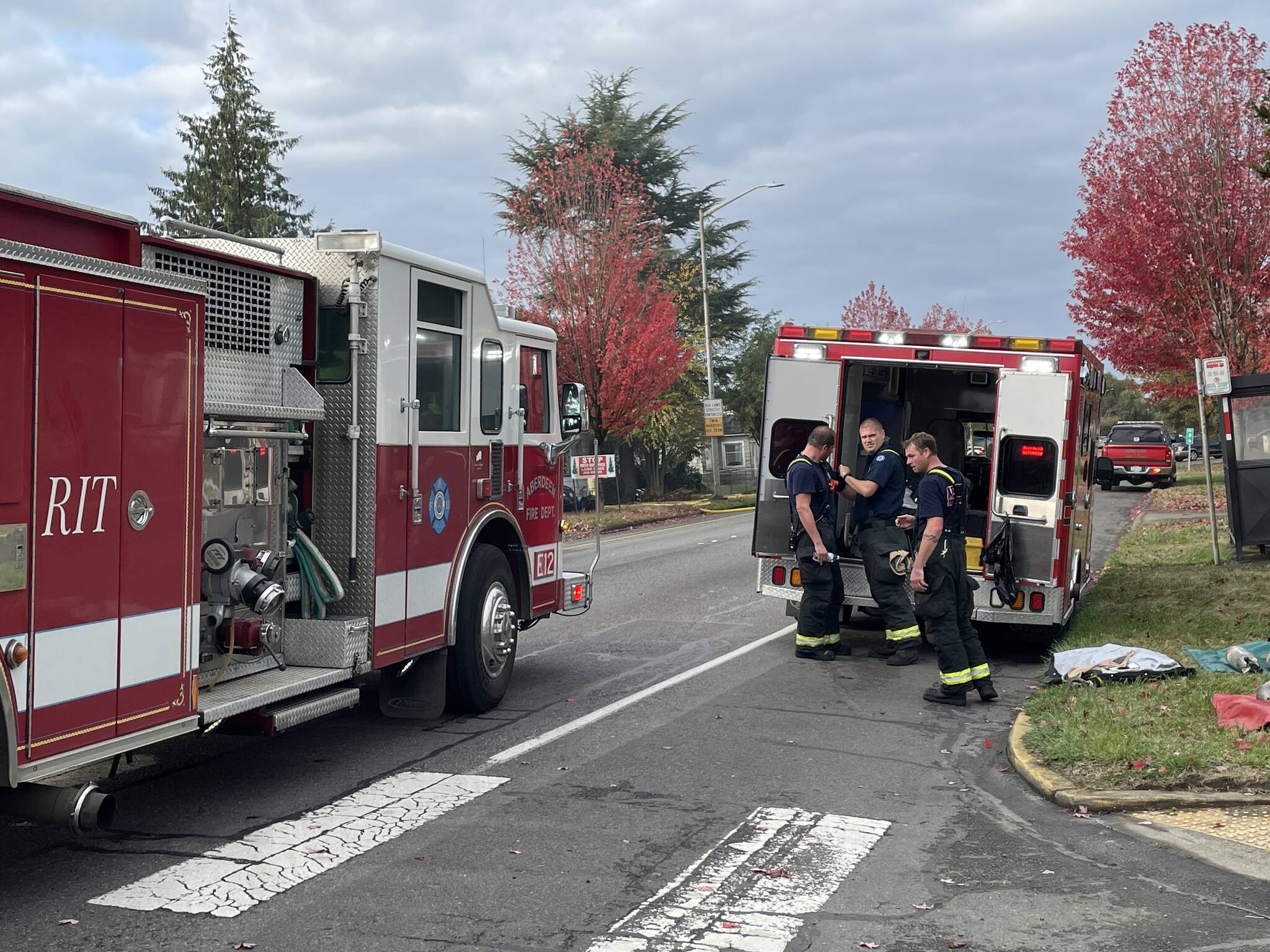A financial consultant shared the results of an ambulance utility rate study with the Aberdeen City Council Wednesday evening, giving some indication of a future of raised rates.
Martin Shaw, senior project manager with the FCS Group, detailed three scenarios for the future of funding Aberdeen’s ambulance program, with possible rates landing anywhere from $31 per month to $58 per month.
The city last commissioned an ambulance rate study in 2010, when the rate was about $20 per month. The city has not raised that amount greater than the rate of inflation since then, with the 2024 rate sitting at $28.
Aberdeen Fire Chief Dave Golding said the city was holding off on conducting a study as central Grays Harbor departments considered joining forces with a regional fire authority, but voters rejected that measure in April 2023, forcing departments to find other ways to accommodate rising costs and call volumes.
“When the RFA failed to pass we knew we would be needing to revisit our rates,” Councilor Liz Ellis said Wednesday. “What we’re doing now just isn’t sustainable, drawing down our general fund reserves. We need to take some action.”
According to the study presented Wednesday, the Aberdeen Fire Department responds to nearly 5,600 calls per year, a 60% higher call volume than in 2010. The department has added seven full-time field employees since then.
About 80% of the costs associated with those calls are attributable to ambulance services, which is typical, according to Golding.
But out of the department’s $8.8 million expenses, about $5 million, or 60% is compensated from customers paying utility fees, while the rest is subsidized through the city’s general fund.
A rate adjustment could bring the portion of the emergency budget derived from ambulance fees and the portion of costs from ambulance calls more into alignment.
If the city stopped supplying the fire and EMS department with general fund subsidies, the ambulance utility rate would have to be more than doubled to $58 per month. If the city continued putting $3.7 million each year from the general fund toward fire and EMS, the rate would be lifted only slightly to $32 per month.
In what consultants labeled the “hybrid approach,” the city could support the department through the general fund at three-quarters of the current level, which would require a utility rate of $45 per month.
Ellis said that option would still be a “big addition of what our rate payers are having to pay, but it’s also stretching out that expense over some time in a way that is causing the least impact” to rate payers.
That scenario would put Aberdeen’s rate above the city of Hoquiam’s $39 per month rate, which was raised at the start of 2024, inviting irritation from some residents.
Golding raised an inquiry from Councilor Stan Sidor after the presentation asking if the consultant could analyze other scenarios than the three options presented Wednesday, and Shaw said they “would be happy to do that.”
As well as adjusting utility rates, the city will likely have to update its contracts for providing service to other jurisdictions, which could provide more revenue. According to the study, 11% of the incidents covered by the Aberdeen emergency department occurred outside of Aberdeen, mostly in Cosmopolis, at Stafford Creek Correctional Center and in Junction City.
The study estimates the city will need to more than double the revenue it receives from outside contracts to align it with the costs associated with calls outside the city.
Golding said it would be up to the council to decide on a resolution approving adjusted rates, though the process would have to be completed by July. Sidor added a public hearing would be “critical” to the process, although it’s not required by law for an ambulance rate adjustment.
“I just kind of want to echo what council member Sidor said as far as having a public hearing built into this, I think that’s really important,” said Councilor Kacey Morrison. “We need to learn from our friends over at the city of Hoquiam who kind of dropped the ball a little bit, if you will, as far as communicating with the public on increases to their rates.”
Contact reporter Clayton Franke at 406-552-3917 or clayton.franke@thedailyworld.com.



